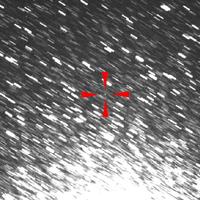
Feb 15, 2013
For the last few months, Radiolab has been thinking about asteroids falling, asteroid hunters, moon rocks, and more. (I mean, what else should we be doing?)
And then, today happened: the western world woke up to news that a 10-ton meteorite, "the size of an SUV," according to the New York Times, rain down over Siberia.
All this happens on the very same day that DA 14, an asteroid -- another, different space rock -- is giving Earth a near fly-by; the two cosmic events appear to not be related.
We've got a reporter down at the University of Central Florida, checking out a DA 14 asteroid viewing party, but for those of us without a ticket to the sunshine state, we'll point you in the direction of two ways of viewing the asteroid "DA 14" as it flies by.
*Telescopes on the other side of the world
Around 2PM EDT, the asteroid will be at it's closest distance to the Earth, about 17,000 miles away. The size of half of a football field, according to news outlets, at this distance it will be its brightest and most visible, and telescopes from Australia, New Zealand, South Africa, and Spain will do their best to train their lenses on the target; scientists aren't sure if telescopes will be able to track the object due to how fast it's moving; in some cases, binoculars might be best. The interwebs are allowing NASA's Jet Propulsion Laboratory in California to tap into some of these overseas telescopes, for a live telecast at 2PM.
Streaming video by Ustream
Check it out here if the Live Stream tanks. You can also participate in a Live Google Chat with cosmic blogger Phil Plait.
*Telescopes on this side of the world
Around 6PM EDT, the asteroid will make it's North America approach. This promises to be a little less scintillating, because the asteroid will be more faint in the sky, and night light (both from the sky and pollution) might prevent us from seeing it. But that doesn't mean we can't try (who doesn't want to say they saw the asteroid in their neck of the woods?). Tap into a live feed by Massachusetts' Clay Center Observatory, or there's also a Live view from the Marshall Space Flight Center.